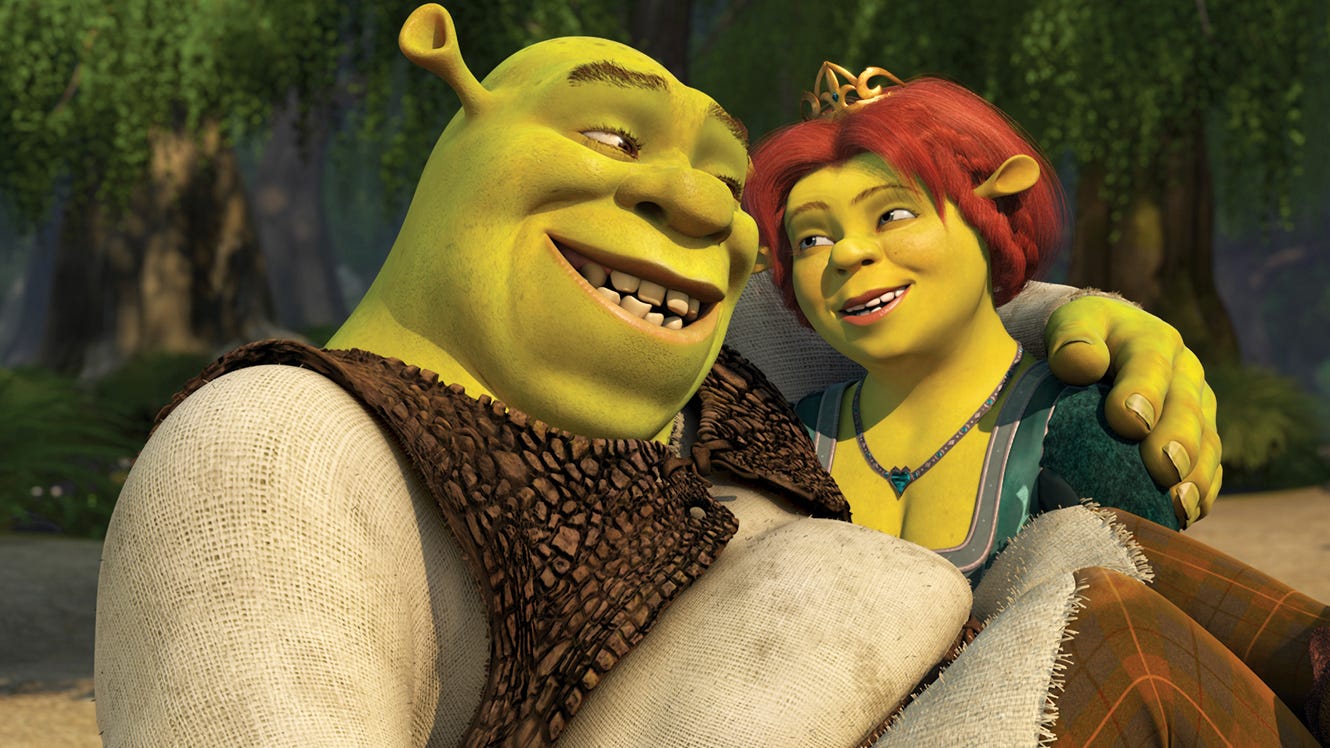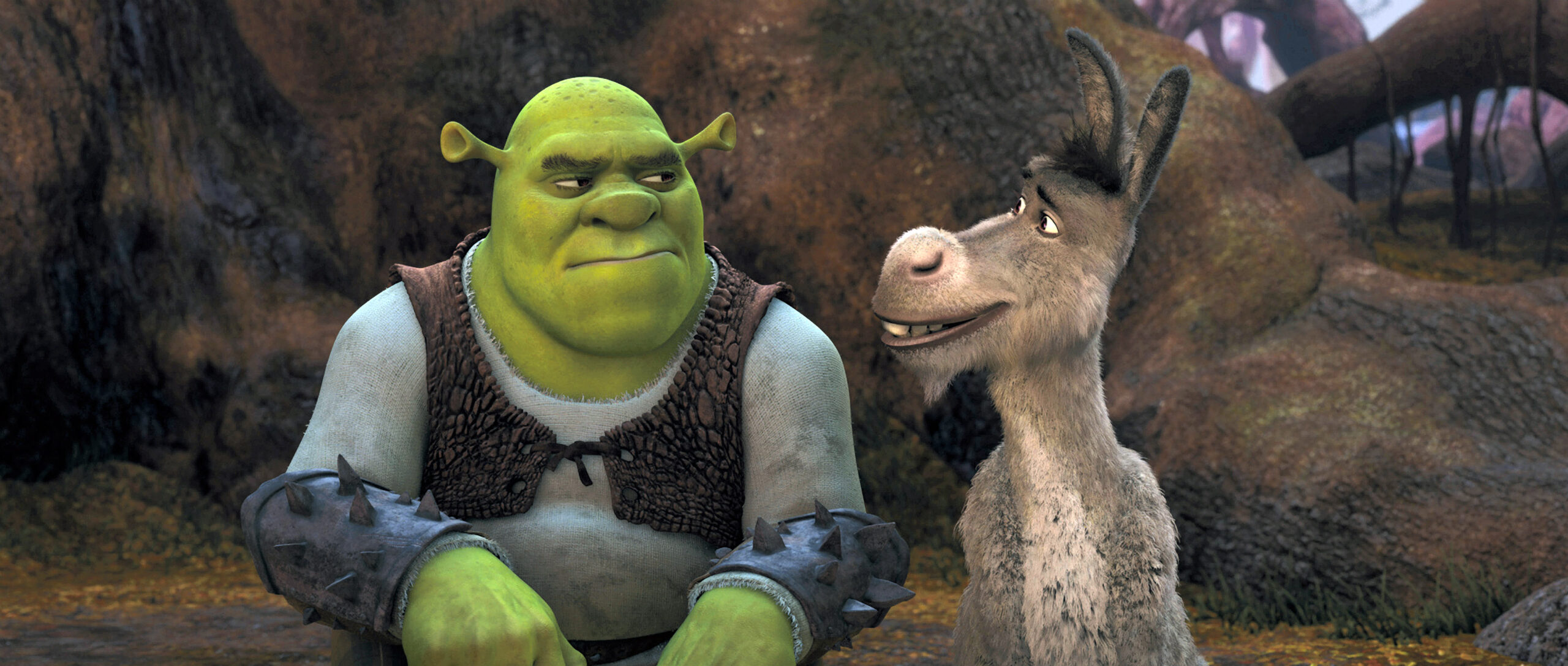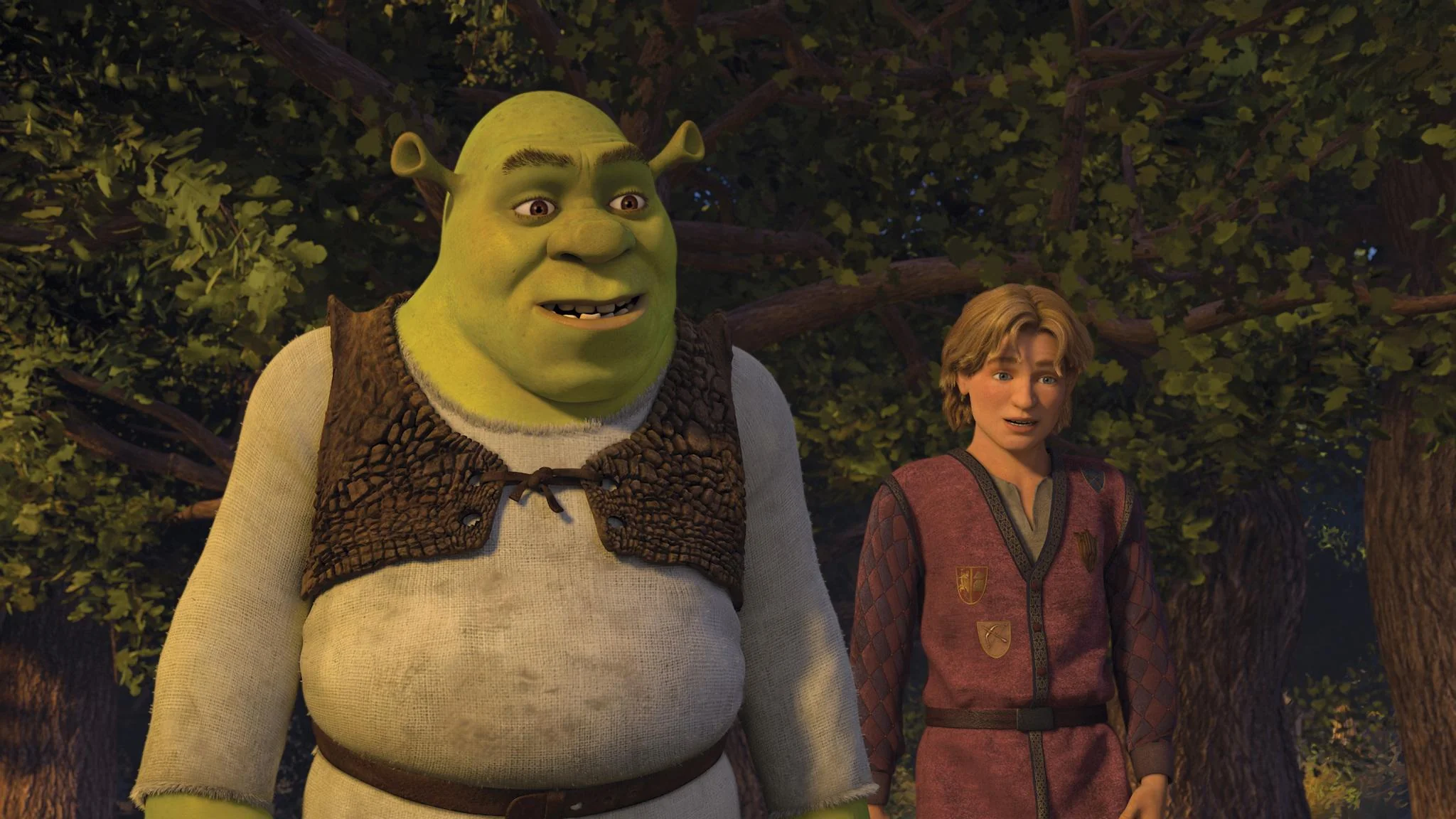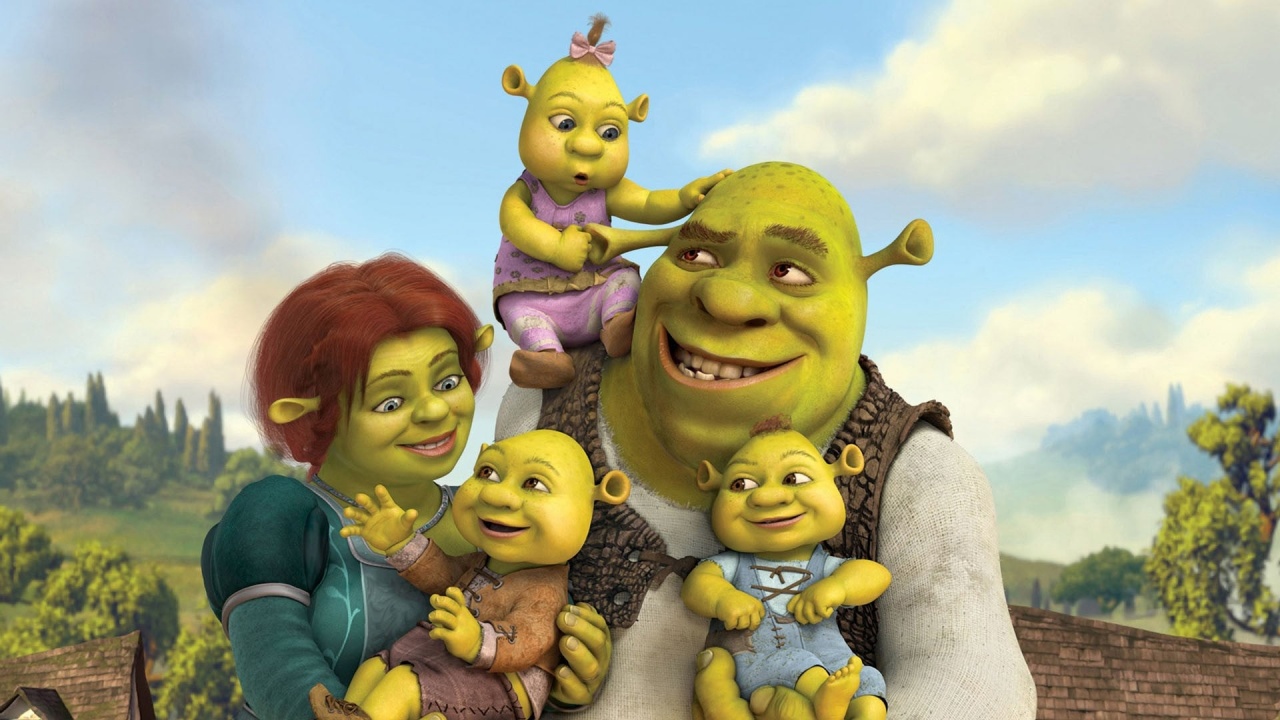Shrek Marathon: An Ogre Ahead of his Time

Wether you remember Shrek or not, most of us have repeated endlessly Donkey's famous "are we there yet ?" on a train or car journey with our parents, friends or partners. Released in 2001, the animated film Shrek follows an ogre of the same name who only wishes to be left alone in his swamp. Being a child the first time I have seen it, I remember a cheeky and fun film. Watching the four of them at 25 made me realise how avant-garde a film considered for children can be.
Shrek is not your usual protagonist. He is rude, scary, ill-mannered and most of all the creature children have learnt to fear in fairy tales. It is quite a spin to be told that we are now supposed to identify to him and to be rooting for him. Although, it is easy to see that in many ways he is the ugliest part of us. He is our insecurity, our complexes, everything we wish we could change.
He is the extreme to which humans can go and how uninteresting we can be compared to all the magical creatures. The films open on various magical creatures invading Shrek's swamp. If it takes a spin on the fairytale, it is also familiar to children to see the three pigs, the wolf, the gingerbread or Pinnochio who they have heard of from other fairytales.
To get his swamp back, the ogre is sent to save the princess assuming in the narrative structure the role of Prince Charming. Accompanied by Donkey, a chatty donkey that annoys Shrek, they make it to the tower and rescue the Princess Fiona. She thinks Shrek is her saviour and true love only to be disappointed. This is the trio that will be at the basis of every Shrek sequel.

The Princess Fiona is expecting a happy ever after with a handsome Prince not knowing that life can have other plans. Even the princess is not who she seems to be, she is cursed and turns into an ogress every night at sunset. Only true love's kiss can free her from the curse. She is naive and full of expectations as what her happy ever after should be but she can also fight and stand up for herself. She has her own character, objectives and opinions. She is a fully three dimensional character.
Shrek shows that the Prince does not always save the princess and debunks the love at first sight myth long before Disney's Frozen does. It shows that love has many forms and does not care for our expectations. It teaches its protagonists and therefore the audience to look beyond appearances. Shrek discovers vulnerability and the pleasure of other people's company. He learns there is more than meets the eye even to the most naive of princesses. Fiona learns to see beyond looks and her prejudices.
Shrek explores the process of falling in love and how its basis lies in getting to know the other person. It goes beyond the classic fairytale. It shows love asks for commitment and work and communication which Shrek and Fiona both learn by losing each other. While Shrek thinks she said she could not love an ogre, Fiona struggles to accept all of herself even the ogress part she was taught to hide.
When Shrek and Fiona are reunited, true love's kiss transforms Fiona into an ogress. Both of them learn that beauty has many forms. The princess ends with the ogre in a swamp instead of a prince in a kingdom. It plays with the ideals of beauty imposed on princesses by making her an ogress which is traditionally considered as an ugly creature.
Although as Shrek says, she is nonetheless beautiful. The narrative pushes us to believe that her appearance does not matter as long as the connection and feelings are true. Expectations, looks, fairytale promises are all misleading. Shrek offers its protagonists a journey back to reality.

The first film ends on a happy ever after. What else was there left to say ? But it was forgetting the genius of Dreamworks. None of the sequels try to reproduce the formula of the first one. Instead, they decide to highlight life changing moments happening in any relationships : meeting the parents, having children, mid-life crisis.
Shrek is not afraid of showing the ugly face of fairy tale and what happens after the happy end which traditionally is the wedding. In the next three films, the audience gets to see the behind the scenes of "they lived happily ever after".
The second film is centered around the newlyweds going to meet Fiona's parents the king and queen of Far Far Away. Shrek has to deal with Fiona's dad prejudices against him. It leads him to drink a magic potion making him human in an attempt to be accepted and make Fiona happy. He is also trying to walk away only to come back to save her from the evil Fairy Godmother and Prince Charming. By making two well-known characters evil, Shrek illustrates once again that all that glitters is not gold.
It gives the film depth and carries the message throughout the film sequels. In this film, Shrek is insecure and vulnerable. It breaks the image of the scary ogre and at the same time offers an positive depiction of masculinity. In this world, Prince Charming is considered as the norm and Shrek is a misfit but it does not mean he can not win. This is a powerful statement for a film to make. Children (and adults) understand one can be different from the norm and find its place.
Shrek The Third continues with the idea of being a misfit with Shrek trying to avoid inheriting the throne after the king's death but also with Arthur who is bullied at school. He is not the heir Shrek expected. When they first meet, Shrek mistakes him with Lancelot who is the popular, athletic one. Shrek learns there how to parent by being there for Arthur. At the end of it, he is also not scared to be a father anymore and Arthur has developed the confidence to be a king.

The last sequel focuses on family life. The depiction of it is ahead of its time. Shrek takes care of the children and daily chores. His relationship with Fiona seems to be based on equality and not on gender roles. They both do their part. It also goes for fighting and saving others as when Shrek is trying to save the kingdom from Prince Charming and the evil fairy creatures in Shrek The Third, Fiona does not wait to be saved.
Fiona, Cinderella, Snow White, Sleeping Beauty and the Queen fight their way out of the prison and into the castle. Princesses can fight and kings can get scared. They exceed the limiting roles written for them to redefine themselves and what it means to be a princess, a prince or an ogre. In the last film, Fiona is at the head of the ogre's rebellion against Rumpelstiltskin. Gender, magical creature classification, age, none of this matters in the Shrek universe. All characters are treated equally.
The last film shares Shrek's struggles with family life and his desire to go back to a simpler time before all his responsibilities. He is given the opportunity to go back for a day but at a price - life as he knows does not exist anymore. He lost his family, his children, his friends.He is feared but lonely again and with no way to go back. The journey to regain the life he has abandoned shows that sometimes you need to lose something to learn its full value. It does not judge Shrek for it but shows there is always a way to fix things.
Shrek offers children and adults a reflection on life and its different stages. It pictures another masculinity and femininity. It allows us to free ourselves of the limits society put on us to be ourselves and love ourselves the way we are. Shrek is a tale of acceptance and a depiction of society as it could be. Any magical or non magical creature can reach its happily ever after no matter how ugly, evil. It is up to us to take the steps towards it knowing that happy endings are not easy and to stay happy they need work.
Available on: Amazon, Google Play, iTunes, Microsoft Store, Youtube